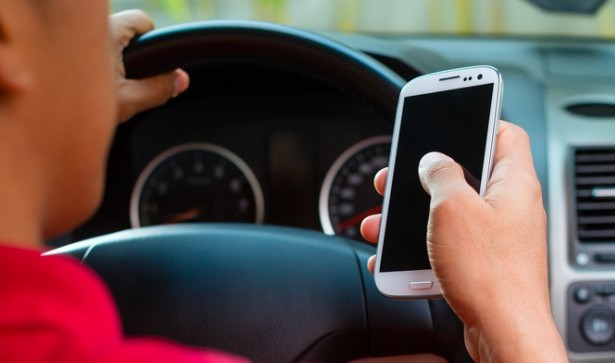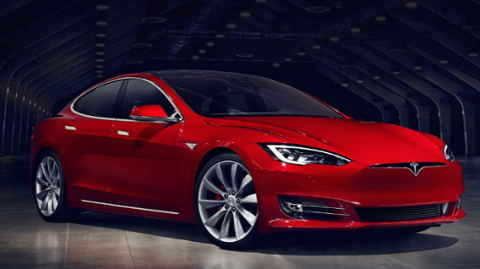 According to an appellate court in California, checking your smartphone while driving your Volkswagen (or any other vehicle) is officially verboten. In January 2012, one Steven R. Spriggs was pulled over and cited for checking a map on his smartphone while driving. In a trial held four months later, Spriggs disputed that his action violated California’s Section 23123 subdivision (a), which states that a person can’t use a phone while driving unless “that telephone is specifically designed and configured to allow hands-free driving and talking, and is used in that manner while driving.” In short, he argued that the statute was limited to those functions of listening and talking—things he insisted could have been followed to the letter of the law. (The case is the People of the State of California v. Steven R. Spriggs, Sup. Ct. Appeal No. 0002345.) But the judge presiding over the court took a more expansive view on the issue. “Our review of the statute’s plain language leads us to conclude that the primary evil sought to be avoided is the distraction the driver faces when using his or her hands to operate the phone,” the Honorable W. Kent Hamlin wrote in his decision. “That distraction would be present whether the wireless telephone was being used as a telephone, a GPS navigator, a clock or a device for sending and receiving text messages and emails.” Hamlin accompanied that decision with a deep dive into the language of the statute, pointing out a section that suggested drivers could use their hands to input a telephone number or name into a phone, provided they used the device in a hands-free manner after the fact. He also acknowledged that one could see the legislature’s attempt to pass a “hands-free” statute for phones as a bit arbitrary, considering all the other devices people can distract themselves with at high speeds. (Not to mention paper maps—why has nobody banned their use behind the wheel?) Nonetheless, “because it is undisputed that the appellant used his wireless telephone while holding it in his hand as he drove his vehicle,” the conviction was allowed to stand. This raises the question, of course, of how technology will evolve to circumvent such rules, especially as more and more people rely on their smartphones and tablets (loaded with Google Maps and other apps) in order to move from Point A to B. The obvious solution is one that takes into consideration the rise of wearable technology such as Google Glass: it doesn’t get more hands-free than a pair of augmented-reality eyeglasses capable of superimposing a dynamic map over part of a lens. There’s also the question of how technology in cars will evolve to feed their drivers the latest navigation information, smartphone or no. Amazon has reportedly patented technology that—at least in theory—could be used to display data on a car windshield. And with their large touch-screens and other next-generation features, many vehicles (including the Tesla) are basically transforming into smartphones on wheels. But none of those advances are immune from a judge or legislature imposing some sort of restriction on their use. That could lead to some very interesting cases over the next several years. Image: Kzenon/Shutterstock.com
According to an appellate court in California, checking your smartphone while driving your Volkswagen (or any other vehicle) is officially verboten. In January 2012, one Steven R. Spriggs was pulled over and cited for checking a map on his smartphone while driving. In a trial held four months later, Spriggs disputed that his action violated California’s Section 23123 subdivision (a), which states that a person can’t use a phone while driving unless “that telephone is specifically designed and configured to allow hands-free driving and talking, and is used in that manner while driving.” In short, he argued that the statute was limited to those functions of listening and talking—things he insisted could have been followed to the letter of the law. (The case is the People of the State of California v. Steven R. Spriggs, Sup. Ct. Appeal No. 0002345.) But the judge presiding over the court took a more expansive view on the issue. “Our review of the statute’s plain language leads us to conclude that the primary evil sought to be avoided is the distraction the driver faces when using his or her hands to operate the phone,” the Honorable W. Kent Hamlin wrote in his decision. “That distraction would be present whether the wireless telephone was being used as a telephone, a GPS navigator, a clock or a device for sending and receiving text messages and emails.” Hamlin accompanied that decision with a deep dive into the language of the statute, pointing out a section that suggested drivers could use their hands to input a telephone number or name into a phone, provided they used the device in a hands-free manner after the fact. He also acknowledged that one could see the legislature’s attempt to pass a “hands-free” statute for phones as a bit arbitrary, considering all the other devices people can distract themselves with at high speeds. (Not to mention paper maps—why has nobody banned their use behind the wheel?) Nonetheless, “because it is undisputed that the appellant used his wireless telephone while holding it in his hand as he drove his vehicle,” the conviction was allowed to stand. This raises the question, of course, of how technology will evolve to circumvent such rules, especially as more and more people rely on their smartphones and tablets (loaded with Google Maps and other apps) in order to move from Point A to B. The obvious solution is one that takes into consideration the rise of wearable technology such as Google Glass: it doesn’t get more hands-free than a pair of augmented-reality eyeglasses capable of superimposing a dynamic map over part of a lens. There’s also the question of how technology in cars will evolve to feed their drivers the latest navigation information, smartphone or no. Amazon has reportedly patented technology that—at least in theory—could be used to display data on a car windshield. And with their large touch-screens and other next-generation features, many vehicles (including the Tesla) are basically transforming into smartphones on wheels. But none of those advances are immune from a judge or legislature imposing some sort of restriction on their use. That could lead to some very interesting cases over the next several years. Image: Kzenon/Shutterstock.com Checking a Smartphone Map While Driving Banned in California
 According to an appellate court in California, checking your smartphone while driving your Volkswagen (or any other vehicle) is officially verboten. In January 2012, one Steven R. Spriggs was pulled over and cited for checking a map on his smartphone while driving. In a trial held four months later, Spriggs disputed that his action violated California’s Section 23123 subdivision (a), which states that a person can’t use a phone while driving unless “that telephone is specifically designed and configured to allow hands-free driving and talking, and is used in that manner while driving.” In short, he argued that the statute was limited to those functions of listening and talking—things he insisted could have been followed to the letter of the law. (The case is the People of the State of California v. Steven R. Spriggs, Sup. Ct. Appeal No. 0002345.) But the judge presiding over the court took a more expansive view on the issue. “Our review of the statute’s plain language leads us to conclude that the primary evil sought to be avoided is the distraction the driver faces when using his or her hands to operate the phone,” the Honorable W. Kent Hamlin wrote in his decision. “That distraction would be present whether the wireless telephone was being used as a telephone, a GPS navigator, a clock or a device for sending and receiving text messages and emails.” Hamlin accompanied that decision with a deep dive into the language of the statute, pointing out a section that suggested drivers could use their hands to input a telephone number or name into a phone, provided they used the device in a hands-free manner after the fact. He also acknowledged that one could see the legislature’s attempt to pass a “hands-free” statute for phones as a bit arbitrary, considering all the other devices people can distract themselves with at high speeds. (Not to mention paper maps—why has nobody banned their use behind the wheel?) Nonetheless, “because it is undisputed that the appellant used his wireless telephone while holding it in his hand as he drove his vehicle,” the conviction was allowed to stand. This raises the question, of course, of how technology will evolve to circumvent such rules, especially as more and more people rely on their smartphones and tablets (loaded with Google Maps and other apps) in order to move from Point A to B. The obvious solution is one that takes into consideration the rise of wearable technology such as Google Glass: it doesn’t get more hands-free than a pair of augmented-reality eyeglasses capable of superimposing a dynamic map over part of a lens. There’s also the question of how technology in cars will evolve to feed their drivers the latest navigation information, smartphone or no. Amazon has reportedly patented technology that—at least in theory—could be used to display data on a car windshield. And with their large touch-screens and other next-generation features, many vehicles (including the Tesla) are basically transforming into smartphones on wheels. But none of those advances are immune from a judge or legislature imposing some sort of restriction on their use. That could lead to some very interesting cases over the next several years. Image: Kzenon/Shutterstock.com
According to an appellate court in California, checking your smartphone while driving your Volkswagen (or any other vehicle) is officially verboten. In January 2012, one Steven R. Spriggs was pulled over and cited for checking a map on his smartphone while driving. In a trial held four months later, Spriggs disputed that his action violated California’s Section 23123 subdivision (a), which states that a person can’t use a phone while driving unless “that telephone is specifically designed and configured to allow hands-free driving and talking, and is used in that manner while driving.” In short, he argued that the statute was limited to those functions of listening and talking—things he insisted could have been followed to the letter of the law. (The case is the People of the State of California v. Steven R. Spriggs, Sup. Ct. Appeal No. 0002345.) But the judge presiding over the court took a more expansive view on the issue. “Our review of the statute’s plain language leads us to conclude that the primary evil sought to be avoided is the distraction the driver faces when using his or her hands to operate the phone,” the Honorable W. Kent Hamlin wrote in his decision. “That distraction would be present whether the wireless telephone was being used as a telephone, a GPS navigator, a clock or a device for sending and receiving text messages and emails.” Hamlin accompanied that decision with a deep dive into the language of the statute, pointing out a section that suggested drivers could use their hands to input a telephone number or name into a phone, provided they used the device in a hands-free manner after the fact. He also acknowledged that one could see the legislature’s attempt to pass a “hands-free” statute for phones as a bit arbitrary, considering all the other devices people can distract themselves with at high speeds. (Not to mention paper maps—why has nobody banned their use behind the wheel?) Nonetheless, “because it is undisputed that the appellant used his wireless telephone while holding it in his hand as he drove his vehicle,” the conviction was allowed to stand. This raises the question, of course, of how technology will evolve to circumvent such rules, especially as more and more people rely on their smartphones and tablets (loaded with Google Maps and other apps) in order to move from Point A to B. The obvious solution is one that takes into consideration the rise of wearable technology such as Google Glass: it doesn’t get more hands-free than a pair of augmented-reality eyeglasses capable of superimposing a dynamic map over part of a lens. There’s also the question of how technology in cars will evolve to feed their drivers the latest navigation information, smartphone or no. Amazon has reportedly patented technology that—at least in theory—could be used to display data on a car windshield. And with their large touch-screens and other next-generation features, many vehicles (including the Tesla) are basically transforming into smartphones on wheels. But none of those advances are immune from a judge or legislature imposing some sort of restriction on their use. That could lead to some very interesting cases over the next several years. Image: Kzenon/Shutterstock.com 

